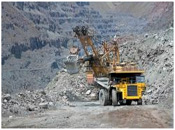
"The mining sector is dead."
This was an overused statement in 2013 made by crowd following investors on Howe Street and Bay Street. And it's not true.
Sure, some niches within the mining sector are on life support, and will continue to struggle in 2014, but to paint the entire sector with the same bearish brush is just lazy.
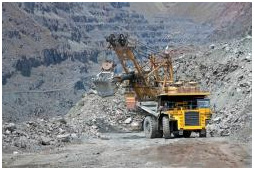
Not all metals and sectors have the same catalysts; so, to not miss mining opportunities in 2014, we must understand which metals/minerals will face supply gluts, difficulty financing and a lack of investor interest, and avoid them. On the flip side, we must be aware of exactly which metals/minerals are facing imminent supply deficits, because junior resource companies in these spaces will receive the bulk of the institutional financings and attract more liquidity to their markets.
Copper: bearish
It is hard not to be bullish on copper for the long-term. Given the fact that there are so few new discoveries being made that have a hope of becoming an economic mine with today's copper prices, inevitably the base metal's value will rise. However, in 2014, there is a copper supply glut in the world. And it is expected to worsen as the year progresses. Barclays Plc reported that excess copper supply will hit a 13 year high in 2014 (272,000 metric tons). Freeport McMoRan Copper & Gold is scheduled to add a big chunk of that excess to the market this year.

Additionally, most advanced-staged juniors need copper's value above $4.00/lb to justify the cost of building a mine. With copper hovering around $3.28 per pound, there isn't a rush to finance these projects at the moment. Expect downward pressure, and a general lack of interest from investors, in the junior copper space for much of 2014.
Nickel: bearish
Nickel is as volatile as it comes in the commodity business. And it is a metal that has been in a tough spot for the better part of the last 6 years. With global production expected to jump nearly 5% in 2014, and demand expected to slow to an increase of nearly 4%, the nickel sector is in for another uneventful and lackluster year.
2013 sucked the life out of the junior nickel market after Xstrata wrote down US$5 billion following the closing of its Cosmos nickel mine. When a giant in the industry takes a hit like that, the risk capital for related juniors dries up (given the lower likelihood of any acquisitions in the near-term).
During the 2008 recession, many nickel mines were put on care and maintenance after the price fell approximately 75%. A couple years following the recession, the moment prices stabilized at healthy levels, nickel mines were quickly brought back into production, stalling any upward price momentum for the base metal.
15-Year Price Chart for Nickel:
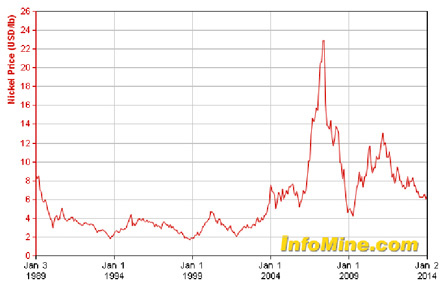
chart source: www.infomine.com
Simply put, there are too many near-term producing nickel assets (which were developed during 2006/2007 when nickel prices were nearly 300% higher than today) and not enough present demand to spur investor interest in the sector. Expect little action from nickel and related miners/explorers in 2014. This market will turn around, just not this year.
Iron Ore: bearish
There are too many great projects for iron ore and not enough demand. Despite the end of 2013 showing some heightened demand for iron ore coming from China, it won't be enough to create any sort of significant interest from investors, particularly for the juniors.
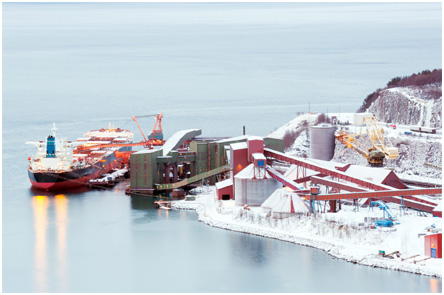
Industrial Container Cargo freight ship with working crane bridge in shipyard at Iron Ore Mine Factory Plant in Narvik Norway
Iron ore is virtually the mining world's most common mineral and projects are typically very costly to bring into production. The high CAPEX for iron ore projects doesn't fit well in today's junior mining climate. Without a raging bull market in the iron ore space, juniors in the industry will remain suppressed and for the most part, downright boring to own.
Junior miners move on speculation, excitement surrounding the sector, inflation, and supply shortages for the particular commodity of interest. As such, there is little financing capital on the street looking to invest in iron ore projects right now.
Gold and Silver: neutral
Simply looking at the fundamentals behind both precious metals, one would make the assumption that gold and silver are going much higher in 2014. However, in the case of these two metals - particularly with gold - fundamentals don't matter right now.
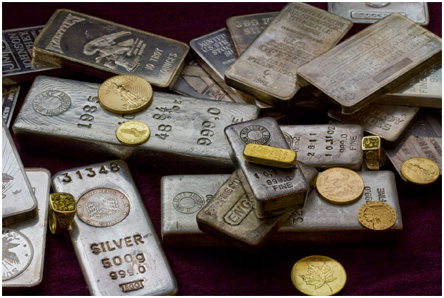
Virtually every major investment bank, from UBS to Goldman Sachs, have recently revised their targets for gold, downward. The Fed continues to print, but the dollar holds value, and even rallies. Peculiar, and what appeared to be manipulative, trades, potentially aimed at suppressing gold's price in 2013 were rampant, yet nothing was done to stop it. Questions regarding whether the Fed has the amount of gold it claims to have also arose in Q2 2013, yet the price collapsed. Gold lost approximately 28% in 2013.
All of these factors have led to investor exhaustion with gold (and silver). Interest in precious metals is still there (just ask the Chinese), but investors (at least in the West) are timid about buying. Despite strong fundamentals, sentiment is poor. Perhaps investors are sick of getting played in the precious metal market. Nevertheless, our long-term outlook remains bullish for silver and gold, but 2014 will likely be a dull year for the two precious metals as the Fed continues its efforts to reduce monetary expansion.
In respect to the juniors operating in this space, we expect more upside potential to come from tightly structured, early-staged explorers than we do the near-term producers in 2014. Unlike 2011 and even 2012, near-term producers aren't that attractive at the moment given that production costs have risen while the value of gold has fallen (of course, there are exceptions).
Explorers who catch the market by surprise on fantastic drill results will greatly outperform a junior that is imminently headed for production (unless cost to produce is exceptionally low). Naturally, early-staged plays are more risky than near-term producers, but they will be the money makers for investors in this space for 2014.
Financing capital for gold and silver plays will remain tight, but management teams with strong track records will be able to find money and drill conservative 3,000 to 10,000 meter programs (enough to make a major discovery).
One caveat to our assessment is that investors, given the near 5-year rally in US equities, may look at 2013's underperforming sectors for growth this year. Gold could be one of those sectors of interest in 2014, especially if the US stock market begins its inevitable correction.
Zinc: bullish
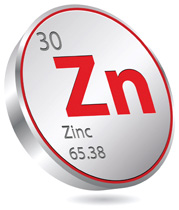
2014 is the year everything changes for zinc. Since late 2012, some of the largest zinc mines in the world have been shutting down (or preparing to shut down) primarily due to the fact that they contain no more economic ore. These world-class mines include:
The Century Mine in Australia - largest open pit zinc mine in the world
Xstrata Zinc's Brunswick Mine - largest underground zinc mine in world
Lundin Mining's Galmoy Mine
Lisheen Zinc Mine in Ireland
Over the last 18 months, the zinc market has lost an estimated one million tonnes of annual production thanks to the closure of world-class mines.
In fact, during 2014, zinc production is expected to be eclipsed by demand for the first time in eight years. And until 2017, the global zinc supply deficit is expected to increase significantly year-over-year. This is bringing about new awareness to a metal that the developed and developing world can't grow without.
Brook Hunt of Wood Mackenzie "expects the zinc price to average US$1.24/lb in 2014 and steadily climb thereafter, possibly challenging the previous high of US$2.08/lb that was reached in late 2006" according to a report released from Wood Mackenzie in 2012.
Zinc currently trades at roughly $0.921/lb.
In October of 2012, when it traded for roughly $0.84/lb, we wrote in Weekly Volume #287 "The reality that zinc is heading into a supply deficit within 12-18 months is the reason we are writing you this week. We are not going to miss out on this opportunity."
Our report continued "Although zinc enjoyed a few years of record high prices in the mid-2000s, thanks to a significant supply shortage, the supply deficit approaching is anticipated to be much more severe. For this reason, we believe hitting its old high of US$2.08 per pound is very realistic."
Given that the world is expected to enter a prolonged zinc supply deficit, we expect the advanced-staged juniors and near-term producers to garner most of the attention from investors within the sector in 2014.
Graphite: bullish
While the staking rush for graphite has come and gone, exposing many area plays and 'pretenders' along the way, the imbalance between supply and demand continues to grow (favouring higher graphite prices).
The imbalance between supply and demand has grown because there are but a handful of companies with the potential to build economic graphite mines in the entire world.
Graphite investing has 3 key components:
1. Supply is predominantly limited to China (China produces and controls upwards of 70% of global supply). This is a very similar situation to the rare earth sector.
2. Graphite's core demand for industrial applications, including its use in steel fabrication, has been rising 5% annually over the past decade. New, green applications (think lithium batteries) developed in the past 10 years have caused a surge in graphite demand and usage, resulting in higher prices and therefore more profitable margins for miners.
3. The exciting allure and unknown potential of graphene (separated layers of graphite) adds an explosive component to a commodity with an already strong supply/demand imbalance.
Flake graphite is considered the big business of graphite sales globally, yet there are only two natural flake graphite mines operating in North America.
China, the country which controls roughly 70% of global graphite production, is known for its mass quantities of smaller 'amorphous graphite' deposits, but lacks flake graphite mines. There is, amongst resource investors, a well-known need to bring on new graphite mines in North America. This has created a buzz around the sector. For many commodities, market awareness is the main driving force behind price.
Click on the link below to read our full report on the graphite sector (published Q3 2013).
Vol. 327 - A Commodity from the Future
We expect the heightened awareness within the graphite sector, which started in 2012, to continue in 2014. Near-term production possibilities will likely garner the bulk of investors' attention given the shortage in mines. Don't expect much of an appetite in the sector for early-staged exploration.
Uranium: bullish
In Q4 2013, we thoroughly documented why we are bullish on uranium for the next few years. 2014 will likely be the year when both uranium producers and explorers receive heightened investment and liquidity.
Click on the links below to read our reports on the sector and find out precisely why uranium is a focus at Pinnacle.
Vol. 330 - A Very Real Threat to America
Vol 332. - The Most Desired Commodity
Industrial Minerals: bullish
Industrial minerals is a wide-ranging term that covers a few dozen types of minerals. In our case, we are bullish on the industrial minerals which are being used in construction processes such as bridges, tunnels, home building, tiling, appliance manufacturing etc. North American infrastructure, from pipelines to bridges and roads, are aging and will need to be replaced.

Recently, new home starts in the US hit a five-year high. The renewed optimism within the construction sector, which has been gaining momentum for about 2.5 years, has put considerable pressure on a group of industrial minerals' supply.
You see, industrial minerals such as quartz, k-feldspar, kaolin, as well as a few others, lack production facilities (mines) - yet demand for these minerals has been rising in tandem with the housing boom.
While many industrial minerals, such as feldspar, are abundant throughout the Earth's crust, economic and consistently high-quality deposits are rare, nor are they easily accessible. As such, there were only two mines in North America that produced k-feldspar (key mineral used in home products such as sinks, bathtubs, tiles and other ceramics - its quality is measured by how consistently white it appears). One of the mines was owned by global industrial minerals giant Imerys; however, its k-feldspar supply has apparently been mined out. The other mine in North America wasn't consistently producing a high quality product, which, given the importance of the mineral to remain as white as possible, is a major aesthetic problem for builders (end user).
This sector has little appetite for early-staged explorers; however, advanced, near-term producers will likely receive positive attention in 2014.
The Fed will continue to play an ever important role in the psyche and confidence of global investors in 2014. While there will be winners and losers in the resource space, like there is every year, the fate of commodities depends on the performance of US equities.
It will be difficult for US equities to meet investors' expectations after 5 years of gains, especially following a year when the Dow returned 26.5% and S&P close to 30%. If in fact US equities begin to slide, it could quickly turn into a 10% + correction. This would strongly benefit much of the resource sector.
The mining sector is not dead. . .not by a long shot. Sure, many metals are relying on an inflationary rally, which may or may not happen in 2014, but others are simply poised to move higher in value based on a supply crunch that has been building for several years. You can't ignore fundamentals.









































